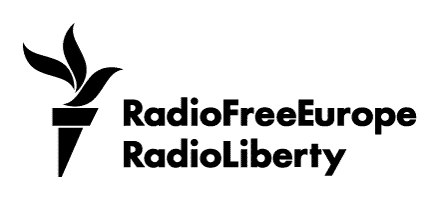DUSHANBE -- Even before Chinese electric cars became a mainstay of the bustling streets of Tajikistan's capital, Tolib Raufov knew they would offer an upside to taxi drivers like him.
He bought his first Chinese electric vehicle (EV) three years ago for the equivalent of $30,000, he says, and resold it last year. With that money, he was able to buy a model from BYD –- China's leading EV maker that recently overtook Tesla in total sales –- for only $21,000. Raufov says the affordable price, strong local resale value, and savings from no longer needing to buy gas have left him with better margins than ever as a taxi driver.
"I have no regrets after buying a Chinese electric car," he told RFE/RL. "It's never been this profitable for me to drive a taxi in Dushanbe."
Raufov's experiences provide an up-close look at one of the most visible ways that China's growing economic influence in the region is reshaping Tajikistan and the other countries of Central Asia -– Kazakhstan, Kyrgyzstan, Uzbekistan, and Turkmenistan.
While he and other taxi drivers embrace the Chinese imports for their affordability, Central Asian governments are opening the door with tax breaks, a green infrastructure expansion, and new factories for local production.
The result, say analysts and local car importers who spoke to RFE/RL, is not only a revision of Central Asia's transportation landscape but an acceleration of the economic and political trends already integrating the region more closely with neighboring China.
The trend puts Central Asia at odds with some Western countries, most notably the United States and the European Union, which have imposed tariffs to curb Chinese EV imports in recent years. This could grow even more against the backdrop of US President Donald Trump's global tariffs and escalating trade war with Beijing as Chinese state-backed firms look to the region to substitute US imports and reroute exports.
"The Trump administration's tariffs are likely to further stimulate China's EV exports to Central Asia and may push Beijing to expand local production in the region," Yunis Sharifli, a nonresident fellow at the China Global South Project, told RFE/RL. "This would help meet domestic demand, support reexport strategies, and diminish the competitive space for Western players in Central Asia's EV market."
How Chinese Cars Took Over Central Asia
China's leading position in Central Asia's vehicle market is the result of years of strategy and opportunity.
"The main reason for China's growth in the EV and car industry has been the rise in demand in Central Asia," Temur Umarov, a fellow at the Carnegie Russia Eurasia Center in Berlin, told RFE/RL. "Consumers want what Chinese brands are offering."
Beijing's major investment push into the region came over the last decade through its Belt and Road Initiative (BRI) -– a multibillion dollar infrastructure strategy championed by Chinese leader Xi Jinping –- as China looked to build new trade routes and more easily procure Central Asia's hydrocarbons, critical minerals, and other valuable resources.
But more recently, China has established itself as a leading trade partner and top foreign investor, which has corresponded with Chinese companies expanding their footprint and playing a larger role across the region's economies.
Tajikistan has also rolled out an array of incentives for EVs from neighboring China, including tax breaks and rebates for consumers, a decade-long tax exemption for EV imports, and building charging stations across the country.
The mayor of Dushanbe also passed legislation in September to transition the city's taxis to EVs and the government has set a target for 30 percent of the country's cars to be fully electric by 2030.
Rustam, a car importer in Dushanbe who asked that his last name not be used in order to speak to RFE/RL, says the networks with China deepened first because of the COVID-19 pandemic in 2020 and then again with Moscow's all-out war with Ukraine in 2022.
While some importers are large enterprises, others like Rustam are individual businessmen who drive and resell the cars across borders.
Rustam says he used to bring in cars from Europe, sometimes making journeys as far afield as Lithuania. But with supply chains disrupted during lockdowns and Chinese companies selling their cars at lower prices when China's strict regulations were lifted, the import networks turned east.
He says that shift deepened again with sanctions placed on Russia, whose economy is interlinked with Tajikistan's, and left car imports from Europe less profitable.
"The Chinese produce high-quality cars now," Rustam said. "Even if sanctions are lifted, the situation in our market will not change."
'A Lightning Pace Of Development'
In the case of EVs, Central Asia is both a growing market and production hub for Chinese brands.
Turkmenistan, the most reclusive country in Central Asia, has also begun to import Chinese EVs, albeit at a much slower pace than its neighbors.
As part of a broader strategy to roll out more green technologies, the government has imported Chinese EVs made by JAC Motors as part of a program for electric city taxis and built accompanying charging stations.
Elsewhere across the region, the market inroads have increased at an accelerating pace.
As the global market for EVs hit a record high of 11 million cars sold in 2024 -– in large part driven by sales inside China -- Kazakhstan saw a 36-fold rise in the sale of Chinese EVs that same year.
Astana is looking to develop its own EV industry with the support of Chinese production, and the Kazakh government has already passed a law establishing a road map to build more charging stations and improve its power grids by 2029.
Non-EV cars from China have also made inroads in Kazakhstan. A local plant will go into operation this year to assemble models made by the Chinese carmakers Chery, Haval, Tank, and Changan.
Oksana Chernonozhkina, editor in chief of the online car magazine Test-drive.kz, says Chinese car brands, not only those making EVs, have taken the Kazakh market by storm as they've quickly caught up with, and in some cases surpassed, their competitors from Europe, the United States, and elsewhere in Asia.
"It's been a lightning pace of development. They lured top designers and engineers for their brands, and this is bearing fruit," Chernonozhkina told RFE/RL.
Aleksei Aleksiev, editor in chief of the Kazakh auto industry publication Behind The Wheel, says Chinese companies currently account for five of the best-selling brands in Kazakhstan, with Korean and Japanese cars also holding top spots.
"We've seen European brands lose a lot of market share since the pandemic," Aleksiev told RFE/RL. "Chinese companies offer good prices, the latest technology, and most importantly, they offer a five- to seven-year warranty. Most European brands offer only three [years]."
In Uzbekistan, President Shavkat Mirziyoyev attended the opening of a BYD factory in Jizzakh in 2024. The plant has already created 1,200 jobs and aims to grow production from 50,000 per year to 500,000. China's Xiaou Group is also building another EV plant in the country as part of a $1.5 billion investment.
Tashkent signed an agreement with China's Henan Suda company to establish 50,000 charging stations by 2033 and boosted sales for the cars by making EV imports exempt from certain taxes, customs duties, and other fees. These state policies have also provided financial incentives for local entrepreneurs to build their own charging stations and cut the cost of buying an EV for Uzbek consumers.
Consequently, EV sales have increased tenfold since the first policies were enacted in 2019 and have continued to grow. According to Uzbek customs data, 2024 marked the first time in the country that more EVs and hybrids were imported than gas-powered cars.
The transition to EVs in Uzbekistan is also bringing economic benefits for those who make the switch. Kahramon, a 53-year-old from Tashkent who recently bought a BYD e2, says his savings are adding up. He no longer has to pay for oil changes and his monthly fuel costs have dropped from $300 for his old gas car to $10 to charge his new EV.
"This car isn't made for going long distances and charging times are not quick," he told RFE/RL. "But it is ideal for urban driving in the country."
From Reexport To Domestic Growth
Kyrgyzstan, meanwhile, has become the leading reexporter of Chinese cars, not only EVs, to Russia among all of Central Asia.
In 2023, Kyrgyzstan imported $651 million worth of Chinese hybrid cars. In 2024, 7,541 EVs, valued at $219.8 million, were brought into the country.
However, this growth of imports hasn't only been only for the domestic market.
Western sanctions placed on Russia following its invasion of Ukraine cut off large imports of Western and Japanese cars, and Chinese-made automobiles –- EVs as well as hybrid and traditional engines –- have filled the void in part thanks to Kyrgyz entrepreneurs.
Daniyar Salyakaev, a car importer who runs a well-known blog in Kyrgyzstan about cars, says that Kyrgyz businessmen took advantage of Russian demand and the Central Asian country's liberal customs procedures to resell cars from their large neighbor in the east to Russia in the north.
"Sanctions were an opportunity and local entrepreneurs moved quickly to seize it thanks to their links with both Russia and China and our country's geography," he told RFE/RL.
Almost 150,000 cars from China have been officially imported to Kyrgyzstan over the past three years. Officially, only a tenth of them were reexported to Russia, but this figure is believed to be much higher.
But while the flood of imports has been directed mostly toward Russia, it is also increasingly common to see Chinese cars on the roads in Kyrgyzstan.
The same combination of affordability and rising quality has led to more Kyrgyz turning to Chinese cars. Some Chinese companies are also expanding to the country, with construction beginning in 2024 on a $115 million EV and commercial truck plant near Bishkek in collaboration with China's Hubei Zhuoyue Group.
Salyakaev says that Russian customs changes have made the reexport of Chinese cars to the country from Kyrgyzstan less profitable, but the experience has left structures and relationships in place that will carry over as the local market for Chinese vehicles grows.
"While Kyrgyzstan was becoming a hub where cars went to the Russian market, a certain infrastructure was built here with professional networks and services to import cars from China," he said. "That looks set to stay."













